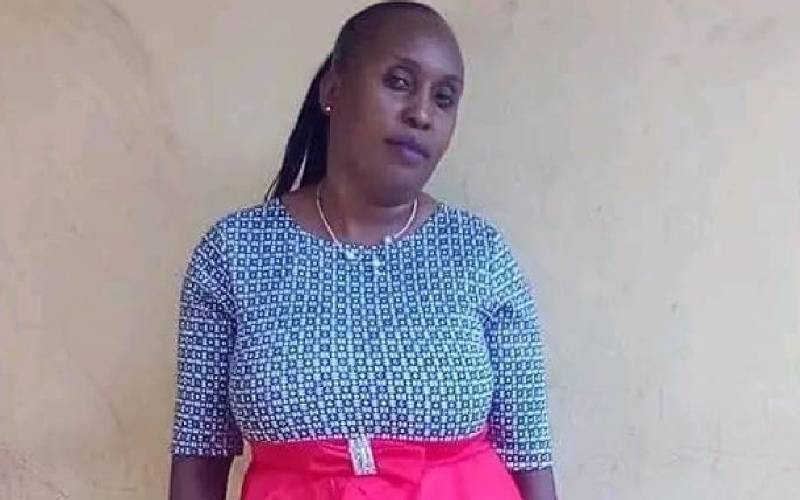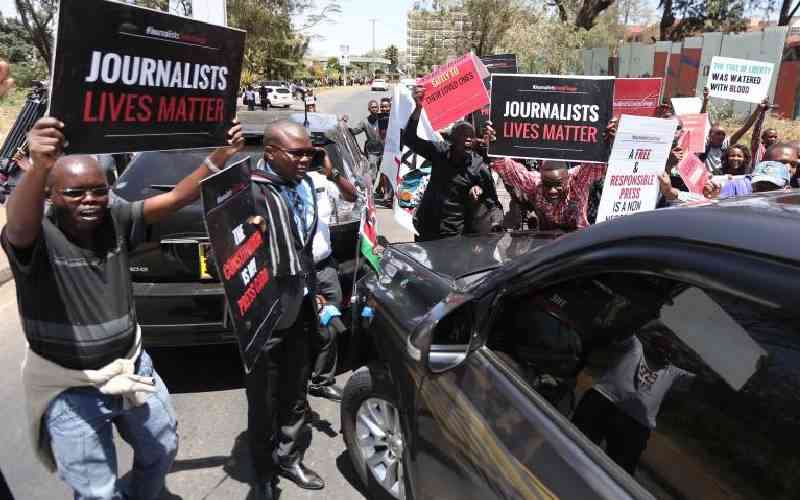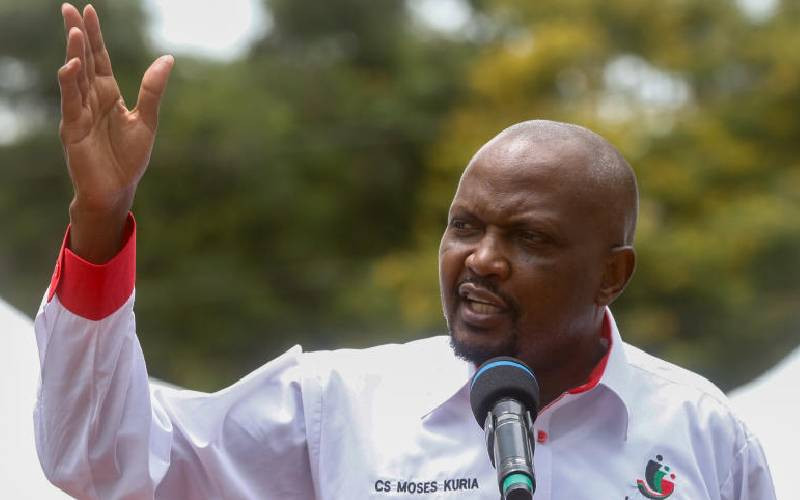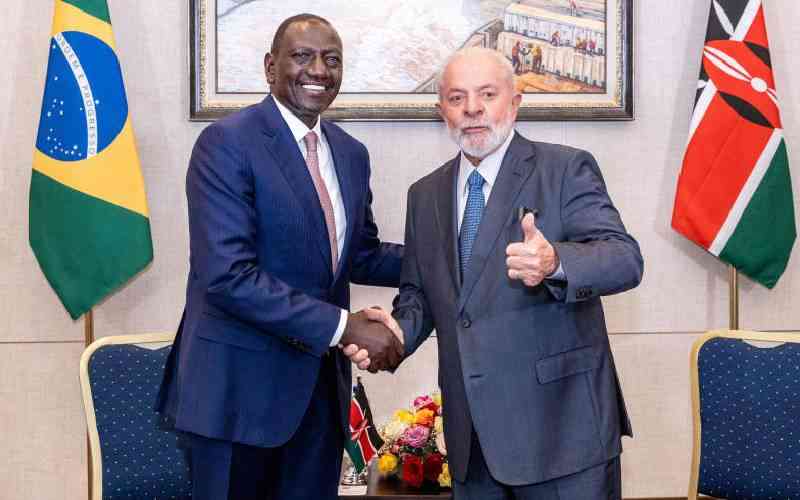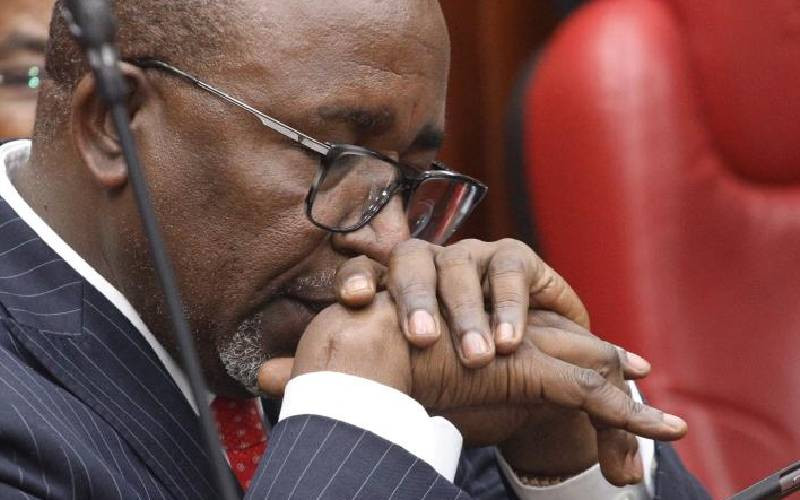By DANN OKOTH
Dusk has come to the bustling camp and the gathering gloom in the sprawling Hagadera refugee camp, northwest of Dadaab in north-eastern Kenya, signals the arrival of another night and terrifying hours ahead.
It is a few minutes past six in the evening and Mohamed Abdul Rale arrives home and gathers his wife and seven children into the badly frayed shack to settle in for what could easily be a defining night.
"Before I retire to bed I always go down on my knees and ask Allah to protect my soul and that of my family, but I also remember to ask him to keep our souls should we die before we wake," says the 50-year-old Somali refugee, citing a line from a reggae hit by the late South African musician Lucky Dube even as he casts a worried glance at a group of suspiciously looking youth. |
Refugees at the camps live in Shacks. |
Revenge attacks
Please let us get over with quickly I do not want to give anyone reason to suspect me," he quickly adds as he scampers to a dark corner of his shack where we are interviewing him.
The narrow passages between the shacks bustle with a sea of humanity with activity nearing a crescendo – as residents go about their daily business – but a waft of death fills the air as danger lurks everywhere. With every turn one runs the risk of stirring a hornet’s nest and igniting the "mother of all wars".
The refugee camps in Dadaab are swarming with militants, (or are they?) with suspected Al-Shabaab and Al-Qaeda cells ruling the camp – terrorising residents in revenge attacks that have not only spread fear at the camps but also jolted operations by aid agencies at the camps.
"They wait for the nightfall to strike," says Rale, fear written all over his face. "They would corner you in your house and chop off your head. If you are lucky, they will spare your family, otherwise they would finish them off too," he adds.
The victims are guilty of being seen walking around in camp with UNCHR staff or other visitors. Otherwise wealthy businessmen are also targeted as the militants dig in every nook and cranny to gather resources to fund their campaign of anarchy in Somalia and beyond.
Before we set out for the Hagadera refugee camp, situated in the northwest of Dadaab region, UNCHR employees warn us to observe strict safety regulation prescribed by the organisation for anyone visiting the camps. We must not linger around in the camps beyond six o’clock in the evening, must travel in a convoy with not less than six policemen in tow—most important we must not ask or say something that may unsettle the refugees because they are living under fear.
But our photographer who happens to be a white man nearly puts us in trouble the moment we arrive at the camp. In his excitement to take exclusive pictures of the camp, his fishes out his camera with every opportunity that presents itself to shoot but the gadget an annoying thing the face of some refugees.
Wee mzungu humpigi Msomali picha ama utajipata kwa shida (you white man you do not photograph a Somali or you will be in trouble) shouts a huge and towering fellow in surprisingly fluent Swahili.
Currently, the situation in Dadaab is extremely challenging, says UNCHR. The kidnapping of three aid workers last year in October and more recently, the killing of two refugee leaders and several Kenyan policemen, as well as threats against humanitarian staff have forced UNHCR and its partners to rethink the way aid is delivered by aid agencies in the camps.
Stay informed. Subscribe to our newsletter
"The security situation in Dadaab is particularly fluid, in fact the UN has classified security status of the area at level four meaning it can degenerate into a crisis at any moment," says Mr Dominik Bartsch, head of operations in Dadaab.
Just before we arrived at the camp early last week a roadside bomb exploded in IFO 1 camp missing a convoy of Administration Police officers by a whisker.
Security restrictions
"I heard a big bang, smoke and then chaos," says 21-year-old schoolteacher Mohammed Yassur. "The security situation here is bad. One minute we are peaceful going about our business, the next we are in the middle of a war," he adds.
Since October, there were security restrictions on movement around the camp. However, life-saving assistance such as the provision of food, water, and healthcare never stopped and has always been our priority. In addition, schools run mostly by refugee teachers have been open and managed to conduct Kenyan national exams at the end of last year despite the insecurity.
This year marks the 20th anniversary of the world’s biggest refugee camp in north-eastern Kenya. UNHCR, which manages the Dadaab complex, set up the first camps there between October 1991 and June 1992. This followed a civil war in Somalia that in 1991 had culminated in the fall of Mogadishu and overthrowing of the Siad Barre’s government.
The original intention was for the three Dadaab camps to host up to 90,000 people. But they host more than 463,000 refugees, including some 10,000 third-generation refugees born in Dadaab.
During last year’s famine in Somalia, arrival rates frequently exceeded 1,000 people a day. Around 30,000 arrived in June, 40,000 in July and 38,000 in August. Currently, and although the border with Kenya is officially closed, UNCHR estimates new arrivals at the camp topped 150,000 since last year with some 4000 refugees having come in since October when the Government went war with Al-Shaabab in Somalia.
But this influx of refugees now carries with it a deadly security element for the country as Al-Shaabab combatants sneak into the country masquerading as refugees to stage daring attacks not just against the refugees but Kenyans. It is suspected the attacks launched in Nairobi and other parts of the group may have been planned at the camp with logistical support from Somalia, which is barely 80km from Dadaab.
Border closed
"We cannot confirm whether the elements causing insecurity in the camps are members of the Al-Shaabab, but we cannot also rule it out because of the movements across the border," says Bettina Schulte, UNCHR associate external relations officer for Dadaabshe adds.
"Because of KDF operations in Somalia Al-Shabaab are carrying revenge attacks at the camp," says Noor Tawane Hilowle, chairman of Hagadera youth association.
"Just recently, they beheaded the IFO camp security chairman. The Dagahaley camp chairman had to be relocated to Nairobi by UNHCR for his safety after the militia promised to assassinate him so does the chairlady," he says.
"They just come into the camp and kill people. They target those who are opposed to their ideologies for elimination," says Hilowle. He adds: "People now live in fear at the camp since their security is not assured. To make things worse these people can cross the border easily and even find their way to Dadaab on foot given the proximity of the border."
He says the youths in the camps have organised themselves into security groups to patrol the camps and man the roads leading to the camps to ward off the attacks.
"At the height of the insecurity beginning last year, aid agencies could not access the camps leading to much suffering by the refugees, but we sat down with UNHRC officials and other aid agencies and agreed to take our security into our own hands," he says.
Due to the patrols by the youths the spate of roadside bombs that nearly paralysed operations are no more.
 The Standard Group Plc is a
multi-media organization with investments in media platforms spanning newspaper
print operations, television, radio broadcasting, digital and online services. The
Standard Group is recognized as a leading multi-media house in Kenya with a key
influence in matters of national and international interest.
The Standard Group Plc is a
multi-media organization with investments in media platforms spanning newspaper
print operations, television, radio broadcasting, digital and online services. The
Standard Group is recognized as a leading multi-media house in Kenya with a key
influence in matters of national and international interest.
 The Standard Group Plc is a
multi-media organization with investments in media platforms spanning newspaper
print operations, television, radio broadcasting, digital and online services. The
Standard Group is recognized as a leading multi-media house in Kenya with a key
influence in matters of national and international interest.
The Standard Group Plc is a
multi-media organization with investments in media platforms spanning newspaper
print operations, television, radio broadcasting, digital and online services. The
Standard Group is recognized as a leading multi-media house in Kenya with a key
influence in matters of national and international interest.


